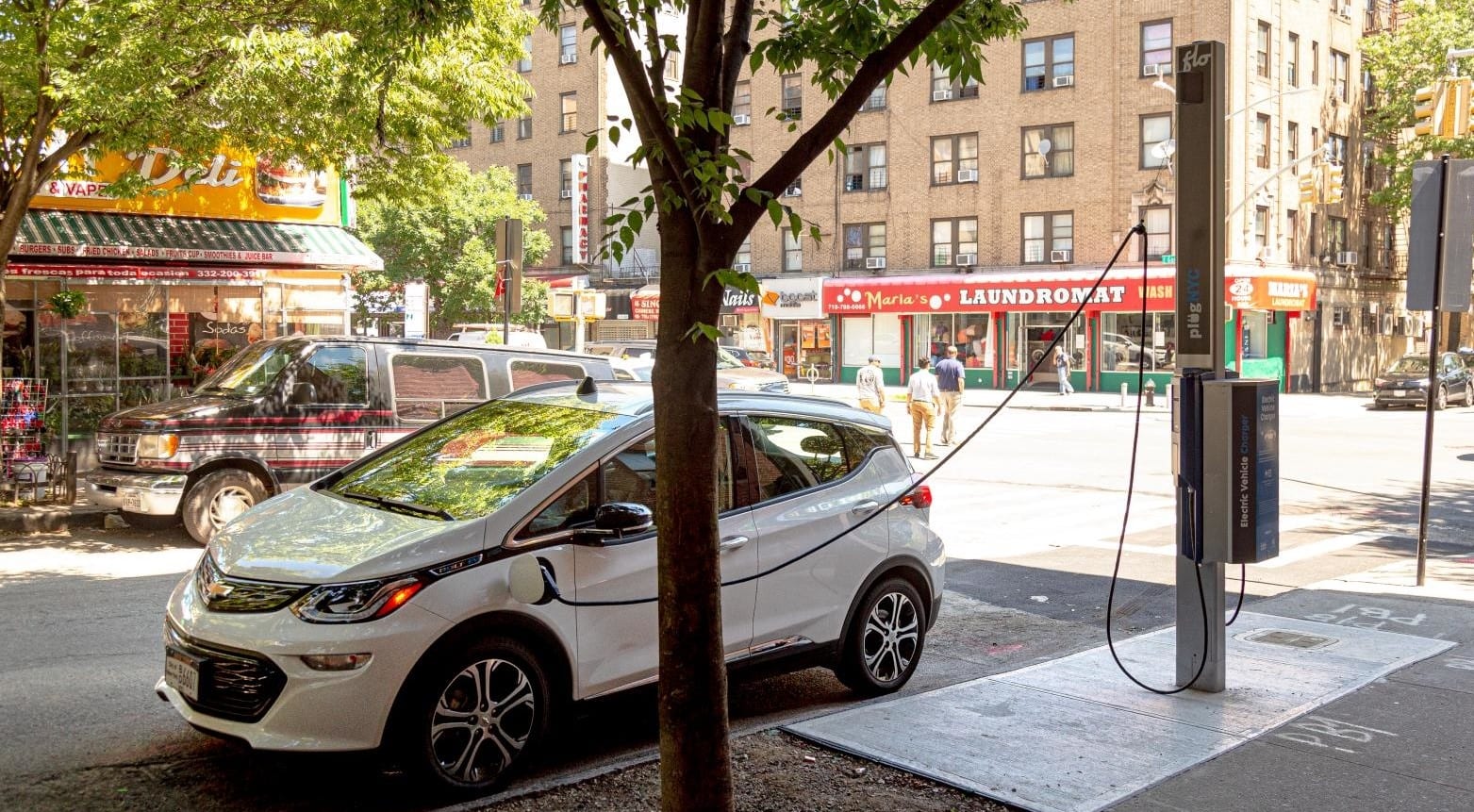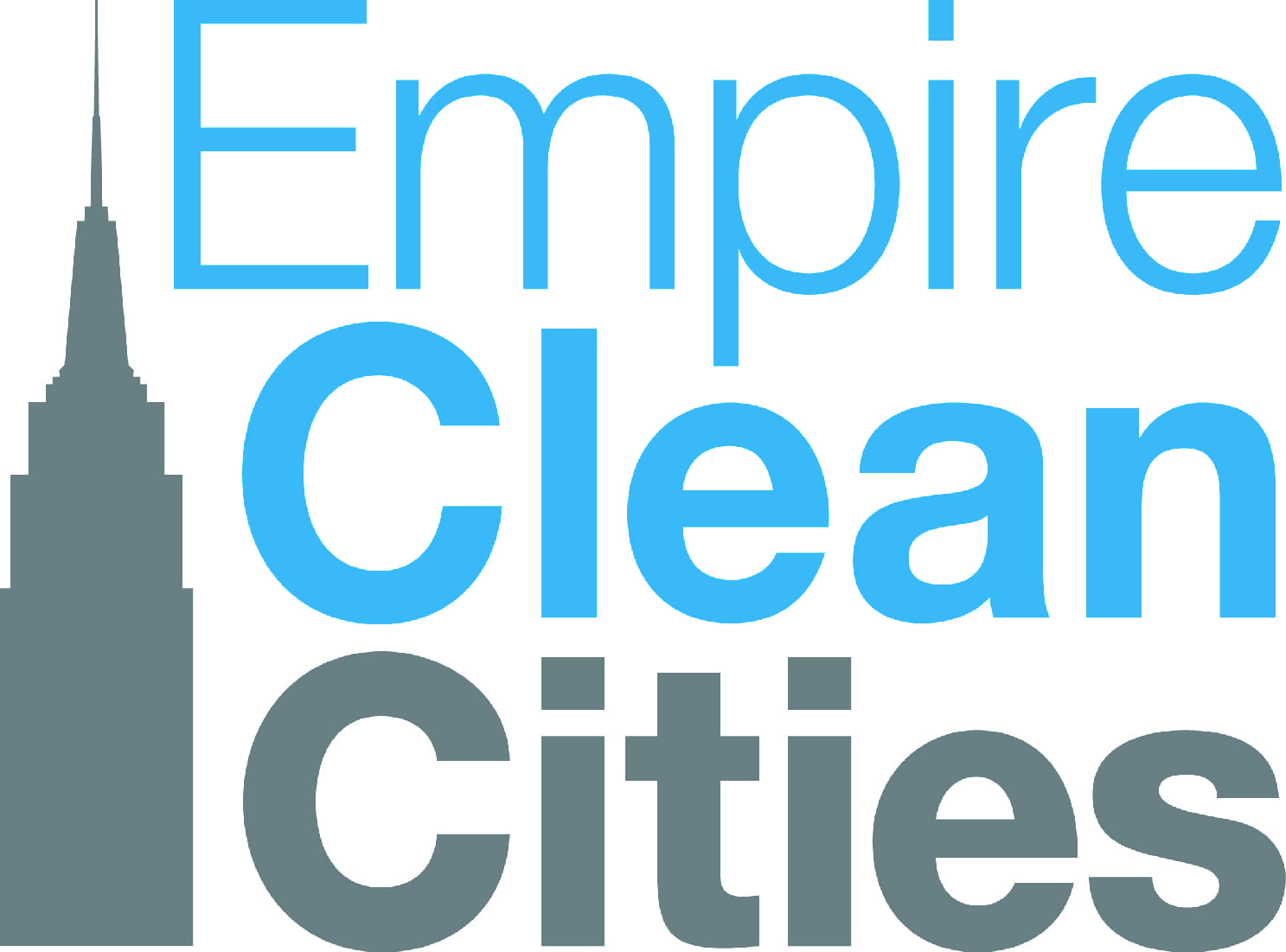This past June, the New York City Department of Transportation (NYC DOT) cut the ribbon on its first curbside Level 2 electric vehicle (EV) charger in the Bronx, New York, as part of its pilot program to install curbside electric vehicle charging stations for public use. Located at Putnam Place and East Gunhill Road in the Norwood neighborhood, the electric vehicle supply equipment (EVSE) is the first in what will be 50 publicly available charging stations located on NYC curbs across all five boroughs. Each station is equipped with two ports, allowing two EVs to charge at once.
Funded by a grant from the New York State Public Service Commission, this project rolled out in collaboration with local electric utility Con Edison and features FLO EV network charging equipment for the physical stations. In addition to the 100 publicly available ports, there will be an additional 20 reserved exclusively for NYC Fleet charging, which will help support the City’s goal to transition to an all-electric fleet by 2040.
Pilot program launched in NYC to install 50 publicly available charging stations on curbs across all five boroughs.
This innovative project provides a model for EV charging in a densely urban landscape, differing from the existing available charging options in public and private parking lots and garages. With a curbside model, EV drivers will be able to pull up directly to an on-street parking space and plug in directly to the standing EVSE unit, similar to a parking meter. The curbside FLO chargers are equipped with a standard connector that is compatible with most models of EVs, as well as a retractable cord to reach any side of the vehicle. Charging at the curbside units will cost $2.50 per hour during the day and $1.00 per hour overnight.
EVs in NYC
A large network of available EVSE is a major consideration when advocating for the adoption and success of EVs in the City. One obstacle to EV adoption is the availability of public and affordable EV charging, especially in an urban environment where many residents live in multi-family unit dwellings and are unable to install personal EVSE in a home garage. Currently, there are approximately 15,000 registered EVs in NYC — only a small percentage of the total 1.9 million registered vehicles in the five boroughs. In order to support increased adoption and the transition to EVs over internal combustion engine vehicles, charging infrastructure must be addressed.
A network of publicly available curbside electric vehicle charging stations is needed for the adoption of EVs in NYC.
In NYC there are nearly 600 Level 2 charging ports, 20 direct current fast charging (DCFC) ports, 800 Level 2 Tesla charging ports, and 90 Tesla Supercharger ports available to residents. With the expected levels of EV adoption in the city rising, the demand for public charging stations is evident. The City’s curbside electric vehicle charging pilot is one strategy to meet this demand and support its climate and electric transportation goals of reaching a reduction in citywide greenhouse gas emissions by 80% of 2005 levels by 2050. With no tailpipe emissions, battery-electric vehicles also help reduce the impacts of harmful pollutants into the air that can cause respiratory and cardiovascular health issues to at-risk communities.
Revel unveiled the nation’s largest DCFC charging Superhub in Bedford-Stuyvesant, Brooklyn, at a Pfizer office building in June 2021, making it “the first of a network of Superhubs planned by Revel across New York City.” The Superhub has 25 fast chargers that are open 24/7 to the public and compatible with any EV models.
Environmental and Public Health in the Bronx
The COVID-19 pandemic illustrated a stark contrast between the vulnerabilities of communities in areas like the Bronx and other neighborhoods in NYC, with high rates of the respiratory virus found in low-income communities of color. According to data from the NYC Department of Health and Mental Hygiene (NYC DOH), the Bronx at one point had 10,714 cases of COVID-19 per 100,000 residents. This rate is significantly higher than in other boroughs and coincides with the high asthma rates that continue to persist in these neighborhoods.
A robust electric vehicle charging station network in communities vulnerable to air pollution ensures cleaner air for NYC.
High asthma rates have persisted in the Bronx and other parts of NYC for decades, a direct result of high levels of toxic air pollutants emitted from on-road vehicles, trucks, and buildings. The Bronx is home to a dense network of traffic infrastructure, truck routes, and highways. According to the NYC DOH New York City Community Air Survey, “traffic density affects a neighborhood’s air quality in a few days. Combustion engines emit “tailpipe emissions” such as PM2.5, NOx and carbon monoxide (CO), while the dust from wear to tires and from braking contribute additional particulate matter to the air.” The continued growth of a robust electric vehicle charging station network in NYC, starting in vulnerable communities to air pollution, helps ensure cleaner air for all New Yorkers.
As NYC continues to adapt to a post-pandemic environment and transportation rapidly evolves across the nation, innovative projects such as the NYC DOT curbside electric vehicle charging pilot will help support a sustainable, fossil-fuel free future for New Yorkers. Ultimately, affordable, and widespread curbside charging stations will encourage more people to transition to electric vehicles and help reduce air pollution, improving the overall health quality of all residents.



